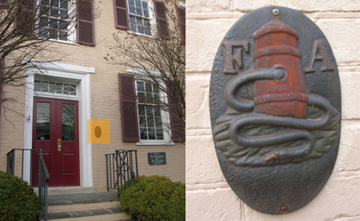This Sunday the Albemarle Charlottesville Historical Society (ACHS) hosts an open quarterly meeting, for members and the public. The event is scheduled for Veteran’s Day, November 11th, at 2pm in the Emmanuel Church in Greenwood. The meeting will include the ACHS Annual Report, elections of officers, and an illustrated talk on the tree industry by Tom Dierauf (formerly with the Virginia Department of Forestry). After the talk there will be a chance to tour two lumber companies: Yancey (the origin of the name Yancey Mills) and J.B.



















